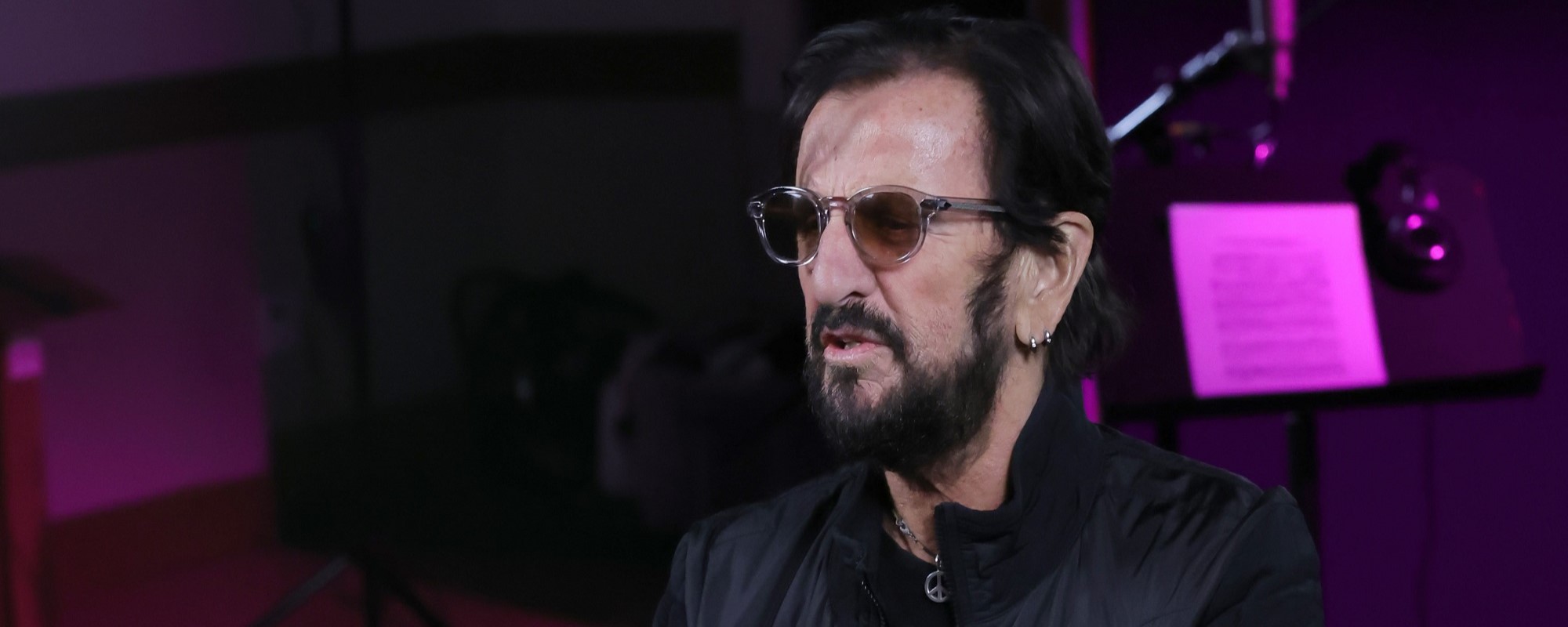Reflections on the Art, Craft and Beauty of Rhyme
Videos by American Songwriter
“I love rhyming. Do you know there are poets who don’t rhyme? Shakespeare did not rhyme most of the time, and that’s why I do not like him.”
– Chuck Berry
Welcome to Part Two of our exploration and celebration of the use of rhyme in songs. The issue raised in Part One, whether songs require rhyme, and, if so, if they need to be perfect rhymes or not, is one that remains unresolved as there is no definitive answer.
But an aspect of song rhyming that is not in dispute is that it is delightful to rhyme. Songwriters, upon discovering a rhyme that is unexpected, yet does everything and more for the song they hoped, know the authentic exultation such discovery can bring.
And as songwriters work in the rhyme trenches year after year, they become even more adept at finding these rhymes, the ones which complete the thought, complete the sound, and add a new dimension to the whole. It becomes, as Lin-Manuel Miranda said, a special power you possess that the other humans don’t.
“Making words rhyme for a living is one of the great joys of my life,” Miranda said. “That’s a superpower I’ve been very conscious of developing.”
A superpower. While such language might seem overblown to a non-songwriter, to those who live in the creation of songs every week of their lives, it’s a very real dynamic. The ability to rhyme, and to instill those rhymes into a song, is a genuine force that songwriters can utilize. Because rhyming, like songwriting itself and the composition of melody, harmony, rhythm and the rest, is a process of some mystery. A songwriter cannot simply calculate rhymes randomly or in advance of the song itself. The rhymes must be discovered, while immersed in the river of song creation. Rhymes emerge from the process, and then impact that process.
A good, if simple, example is the song “The Word” by The Beatles, written by Lennon & McCartney. Recorded in 1965 and included on Rubber Soul, it was attributed to both Paul and John, as were all their Beatles songs, but was mostly John’s creation, triggered by his love of the word `love’ and all it signified.
“We wrote ‘The Word’ together,” Lennon said, “but it’s mainly mine… It sort of dawned on me that love was the answer, when I was younger… My first expression of it was a song called ‘The Word.’ The word is ‘love.’ …
“It seems like the underlying theme to the universe,” Lennon said. “Everything that was worthwhile got down to this love, love, love thing. And it is the struggle to love, be loved and express that….
“Whatever else love is, and it’s many, many things, it is constant. It’s been the same forever.”
Say the word and you’ll be free
Say the word and be like me
Say the word I’m thinking of
Have you heard the word is love?
It’s so fine, it’s sunshine
It’s the word
Love
From “The Word”
By Lennon & McCartney
The word ‘love’ in English, as mentioned in Part One, has very few rhymes. Yet, as songwriters know, limitation creates form. Rather than feel restricted by the paucity of available choices, he finds a conversational way of setting up the rhyme that flows in an organic, unforced way, anchored on the word ‘of’.
Such is the ingenious brilliance of a master songwriter: “Say the word I’m thinking of/ Have you heard the word is love?“
It’s worth noting that Lennon understood a fundamental truth about song rhyming here: that when using two rhymes, it’s wise to always place the lesser rhyme first.By doing so, the songwriter ensures that the listener has no clue that it is a set-up, so that when the next line comes in pure rhyme, it seems inevitable and right. And, yes, perfect.
It’s the same here. But Lennon also uses an inner rhyme, an old-fashioned stalwart of Tin Pan Alley songwriting in which extra rhymes are included before the ending rhyme. Here we get “Have you heard the word is love?” Matching ‘heard’ and ‘word’ inside a line adds extra momentum to the line, and is pleasing to the ear.
Yet to arrive at that, the songwriter does not begin with an equation containing inner rhymes, and write from there. He doesn’t invent that rhyme, he discovers it. And that dynamic of discovery, as opposed to invention, distinguishes the dynamic of being a songwriter, forever fishing in the river of song, unsure what, if anything, might be caught there. In relinquishing control of the process, and being open to that which emerges, is both the joy and challenge of songwriting.
It is, as Leonard Cohen said, like being “married to a mystery.” And as long as one can joyfully and patiently engage with that mystery, never knowing where it will lead, if anywhere at all, one can co-exist in harmony with the unknown, which is the ultimate source of all song.
Bob Dylan, who remains one of the most miraculous and influential songwriters of our time, did effect a profound change in the arc of popular songwriting. Lennon was always vocal about Dylan’s influence on his songwriting. Before hearing Dylan, Lennon said, he never considered he could bring his real life to song, and merge it with poetry. His song “Help,” he said, was an authentic cry for help which emerged directly from this sense of liberation he found in Dylan’s songs. And The Beatles, obviously, changed the world with their songs.
But it’s instructive to realize that, although their songs were bravely revolutionary, neither Dylan or The Beatles reinvented songs by dispensing with all the old forms to forge new ones. Instead they used the existing forms with great love and reverence; the traditional song structures of verse, chorus and bridge, as well as the craft elements of melody, rhyme and meter. Within that narrow form, they created whole new universes.
The use of rhyme in songs is a dynamic intersection of the art and craft of songwriting. Art leads to the choice of word, the distinction of the image and its place in this rhythm. Craft comes in the way one sets up that rhyme, and uses it within the line, and the entire song.
It’s not unlike setting up a magic trick, in which some playful sleight-of-hand early on allows the real magic to occur. In song, it doestn’t matter how glorious a rhyme might be, if it is not set up in a well-crafted way that, like that sleight-of-hand. sets up the magic before you know it.
The songwriter’s job, then, requires contriving something so that it seems uncontrived. Every rhyme is somewhat of a contrivance, yet the challenge is to use them in a way that they seem natural, intrinsic to the song, and unforced. Which requires, usually, an artistic and crafty set-up rhyme.
A famous example is Irving Berlin’s “God Bless America,” which, although written in the early 20th century by a hit songwriter, resonates as deeply in our culture as the national anthem. Like Sammy Cahn with “My Kind of Town,” Berlin wisely didn’t even attempt a rhyme for `America,’ as none exists that would not be clunky at best.
He accomplishes this by landing on an image: ‘the oceans, white with foam.’ Knowing that an image is always compelling, he gives the mind a picture which evokes an emotion, this oceanic majesty, although ‘white with foam’ is a set up for ‘home sweet home.’ The culminating line is “God bless America, our home sweet home,” with the word requiring the set-up rhyme being ‘home.’ Hence, the foam.
Obviously, when one thinks of America, it is not foam that’s foremost. Yet used as a set-up — the rhyme before the rhyme — its placement is not suspect, and the whole of the song concludes with a melodic cadence aligned with the final culminating rhyme, ‘home sweet home,’ that simply seems perfect. Yet its perfection has a lot to do with the songwriter’s art in concealing its contrivances.
From the mountains to the prairies
To the oceans white with foam
God bless America, my home sweet home
God bless America, my home sweet home
From “God Bless America”
By Irving Berlin
Songs still rely on rhymes, especially when it comes to setting up the title. So many songs are built around the title, both lyrically and musically, and when the musical cadence agrees with the rhyme in landing on a title, few things are sturdier. In Dylan’s “I Shall Be Released,” for example, the chorus is anthemic, and the title is set up with a cinematic sweep of light across the whole nation.
“I see my light come shining
From the west unto the east
Every day now, every day now
I shall be released.” Although he never abandoned rhyme, or other craft elements which hold songs together, Dylan did become increasingly more adventurous and playful with rhymes, showing songwriters and the rest of the world one can use these forces which have existed for centuries, but in entirely new and vital ways.
“Maggie comes fleet foot
Face full of black soot
Talkin’ that the heat put
Plants in the bed but
The phone’s tapped anyway
Maggie says that many say
They must bust in early May
Orders from the D.A.
Look out kid
Don’t matter what you did
Walk on your tip toes
Don’t try No-Doz
Better stay away from those
That carry around a fire hose
Keep a clean nose
Watch the plain clothes
You don’t need a weatherman
To know which way the wind blows…”
From “Subterranean Homesick Blues”
By Bob Dylan
In this famously virtousic and exultant use of rhyme, Dylan’s unbridled brilliance shines. Yet he does it within the ancient form of perfect – and near-perfect – rhymes.
Remember that the art of rhyming does not require a remembrance of all great rhymes past. It has to do with how one uses those rhymes. Many verses in songs since the 1960s are composed of quatrains — four lines — and the most common rhyme scheme we hear in quatrains is abcb, in which the second and fourth line rhyme, and the first and third do not.
But there are more intricate ones. Dylan has used the same exact rhymes, often, that thousands, if not millions, of songwriters, have also used. But his brilliance and great artistry lies not simply in the choice of rhyme, but in their usage. A remarkably ingenious rhymer since his first songs, he did not devise new rhyme schemes, but used ancent, and often intricate, ones. In many songs he uses the abab, which requires each line to rhyme, and intertwines these rhymes.
Unlike the common and oft-used abcb pattern, in which only the second line (b) and final line (b) rhyme, in this scheme and also aabb, every line requires a rhyme. And it requires that intricate rhyming to be accomplished in a way that seems natural, although rhyming is not truly natural. This is where songwriting savvy and brilliance come in.
Dylan has used the abab rhyme scheme many times, and always so beautifully. For example, this verse from his epic song “Sara,” from the Desire album:
Now the beach is deserted except for some kelp (a)
And a piece of an old ship that lies on the shore (b)
You always responded when I needed your help, (a)
You gave me a map and a key to your door. (b)
Or this verse from his song “Isis,” also from Desire, which he wrote with Jacques Levy:
Isis, oh Isis you’re a mystical child (a)
What drives me to you is what drives me insane (b)
I still can recall the way that you smiled (a)
On the fifth day of May in the drizzling rain (b)

Though Dylan has employed the abab rhyme scheme often, it’s rarely used by other songwriters. It harkens back to romantic poetry, used by Shelley, Keats and Byron. In Byron’s poem “When We Too Parted” you can see the seeds of multi-rhymed Dylan wordplay, and an abab scheme:
When we two parted (a)
In silence and tears, (b)
Half broken-hearted (a)
To sever for years, (b)
Pale grew thy cheek and cold (a)
Colder thy kiss; (b)
Truly that hour foretold (a)
Sorrow to this. (b)
By Lord Byron
In the 1991 interview I conducted with Dylan, I mentioned that this kind of rhyming was common among romantic poets, though not among many modern songwriters. Immediately he recited a verse by Shelley, from the poem “Men of England,” that showed that which is already well known: Dylan knows poetry well. From all ages, and romantic poetry seems the closest to his own lyrical spirit. His love and knowledge of it explains the grace and ease he’s always had with intimate rhyming patterns. It also employs the intertwining abab rhyme scheme.
Have ye leisure, comfort, calm,
Shelter, food, love’s gentle balm?
Or what is it ye buy so dear
With your pain and with your fear?
By Percy Bysshe Shelley
In song, the intricacy of a rhyme scheme, though impressive, does not equal a good song, any more than any craft element does on its own. The rhymes are part of the whole, of the momentum of the rhythm and melody, and progression of a story. They provide beautiful completion to his often complex, poetic language, always folded perfectly into the meter. But they are created not to impress with virtuoso rhyming, but to link with melody, harmony, lyrical expression, phrasing, singability and more to form a solid song architecture.
It’s that solid underpinning of song elements that instills timelessness into song so it can have a long life, which is the goal, as Sammy Cahn reminded us. Songs should be built to last so that, as the legendary Van Dyke Parks said, “they don’t fall apart like a cheap watch in the street.”
Dylan’s also been brilliant – and playful – with rhymes, but always in service of the song. A great example is his classic anti-hero song “Joey,” also from Desire, about the mobster Joey Gallo.
He uses the aabb rhyme scheme, linking ‘fork’ and ‘New York’ in the final verse of this epic narrative, and then introducing a couplet founded on two simple long `e’ rhymes — ‘Italy’ and ‘family.’ In one of his most cinematic verses, he gives us the death of Joey Gallo.
One day they blew him down in a clam bar in New York
He could see it comin’ through the door as he lifted up his fork
He pushed the table over to protect his family
Then he staggered out into the streets of Little Italy
From “Joey” by Bob Dylan
(Incidentally, when I mentioned “Joey” to Dylan, he was surprised because many people castigated him for writing a song about a horrendous human being. “That is a good one,” he said. “You know who got me singing that song? Garcia! He told me it is one of the best songs ever written.” )
These are rhymes which emerge from the momentum of the melody and groove — as opposed to existing on a page to be read — and sung with rhythm and soul, so that the result is an effortless, rather than forced, use of rhyme. The rhymes are seamlessly folded into the imagery and action, all in beautifully-metered rhythm, to create a powerfully visual effect.
In our 1991 interview, which is included in Songwriters On Songwriting, Dylan discussed rhyming at some length.
A meticulous craftsman who is known to rewrite songs even after they are recorded, he’s always been an inspired rhymer.
Asked if rhyming was fun for him, he said, “Well, it can be, but you know, it’s a game…It gives you a thrill to rhyme something you might think, well, that’s never been rhymed before.”
He then expounded on his method of combining the dictates of the craft with the spontaneity of this art.
“My sense of rhyme used to be more involved in my songwriting than it is. Still staying in the unconscious frame of mind, you can pull yourself out and throw up two rhymes first and work it back. You get the rhymes first and work it back and then see if you can make it make sense in another kind of way. You can still stay in the unconscious frame of mind to pull it off, which is the state of mind you have to be in anyway.”
Asked if working backwards like that was something he often did, he said, “Yeah, a lot of times. That’s the only way you’re gonna finish something.”
It’s an understanding that is key to the conception and completion of a good song – one works backwards and forwards at the same time, much as a rhyme simultaneously propels the listener of a song backwards and forwards. As songwriters know, to create a verse with a rhyme structure, one often has to put rhymes in place first, and work backwards from there. So that in finding the set-up rhyme — such as Berlin’s foam — we often discover the heart of songs. In the necessary contrivance the art is discovered, and that is the soul and genius of songwriting, in which all its aspects come together organically and dynamically.
The goal is to contrive this rhyme pattern in a way that seems uncontrived, so that the rhymes fall naturally in terms of phrasing and meter, but do not call attention to themselves. It is the aim of the songwriter to create words which flow with an inevitability – as if they are simply the right line, meant to be in that place – that conceals, seamlessly, the songwriter’s hand.






Leave a Reply
Only members can comment. Become a member. Already a member? Log in.